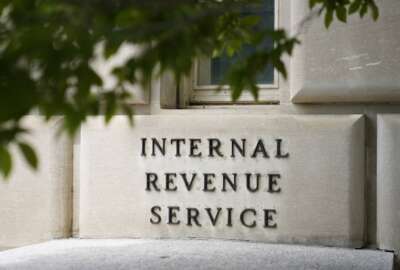Congressional Research Service gets new leadership
Librarian of Congress appoints Karen E. Donfried as new director of the Congressional Research Service.
- Congress' own think tank, the Congressional Research Service is getting new leadership. Foreign policy expert Karen Donfried (DAWN-freed) will become its director starting Sept. 23. She’ll take over for an interim leader who’s held the top job for more than a year. Donfried previously served as Assistant Secretary of State for European and Eurasian Affairs, and as president of the German Marshall Fund. She also worked as a European specialist for CRS for 10 years. (Librarian of Congress appoints Karen E. Donfried as new director of the Congressional Research Service - Congressional Research Service )
- The Thrift Saving Plan saw positive returns across the board for August, making it the second consecutive month with positive returns for all funds.
The biggest change happened with the S fund, which saw its returns drop nearly six percent in August after climbing just over six percent the month before. The C fund continues to post the highest year-to-date return at better than 19 percent, and just over a 27 percent return over the last 12 months. All Lifecycle fund returns decreased slightly from July to August while remaining in the positive.
(TSP returns remain positive for August - TSP.gov)
- Attention federal employees and retirees, the window is now open to donate to your favorite charity. The 2024 Combined Federal Campaign kicked off on Sept. 1. Feds can donate to more than 5 thousand charities across 14 broad categories through Jan. 15. OPM acting director Rob Shriver is this year's CFC chairman. In 2023, the CFC raised about $68 million dollars and had over 81,000 hours of volunteer service registered and pledged by federal employees. Over the last 60 years of the CFC, federal employees and retirees donated more than $8.7 billion dollar.
- The Treasury Department is on track to keep $4 billion dollars from going to fraudsters this year. Treasury said it’s keeping this money from going to fraudsters through a combination of efforts. It’s sharing its Do Not Pay database with states to prevent unemployment insurance fraud. It’s also using machine learning tools to flag cases of check fraud. Dave Lebryk is the fiscal assistant secretary at the Treasury Department. He said the 4 billion figure may actually be an undercount. (Treasury avoids paying $4B to fraudsters this year in ‘whole of government’ strategy - Federal News Network )
- The Defense Department is seeking solutions for contested logistics and sustainment to support the department’s Combined Joint All Domain Command and Control initiative. Interested vendors can submit their solutions in a 5-minute pitch video through the Tradewinds Solutions Marketplace platform. The Chief Digital and Artificial Intelligence Office, the Defense Innovation Unit and the Office of Under Secretary of Defense Research and Engineering are spearheading the effort. Submissions are due by Sept. 6.
- The Defense Department is gearing up for the next phase of the Joint Warfighting Cloud Capability contract. DoD’s top IT officials are considering streamlining contracting processes and bringing on more cloud service providers into the next phase of the contract. The Defense Department has already made over 65 task orders worth over $1 billion. Les Benito, the Defense Information Systems Agency (DISA) Hosting and Compute Center’s chief of product development and management, said the agency is working with the services, the CIOs and the combatant commands on additional requirements for the next contract.(DoD to add more cloud providers for JWCC 2.0 - Federal News Network)
- The National Geospatial-Intelligence Agency is preparing to issue a big data labeling request for proposals. NGA’s data labeling contract could be worth more than $700 million. NGA Director Vice Adm. Frank Whitworth said it represents one of the biggest data labeling efforts in the federal government. The goal is to help NGA tag and label satellite imagery, objects and other GEOINT data. NGA wants to use that data to fuel its artificial intelligence and machine learning projects. The data labeling RFP is slated for release later this month.
(NGA to launch $700M data labeling competition - Federal News Network)
- The Defense Department has seen its supplier base shrink by more than 27% over the last decade. This reduction comes despite increases in contract spending over the same period — it reached a high of 456 billion dollars in 2023. A Bloomberg Government analysis found there are multiple reasons that the number of vendors working for DoD has gone down. BGov said these factors include how the top vendors have dominated the market and the Pentagon’s use of large contract vehicles. DoD is taking steps to modernize its supplier base like improving its planning and budget system and creating new offices to fund innovation. (DOD supplier base shrinks - Bloomberg Government)
- Federal agencies are taking steps to adopt more secure internet routing technologies. That’s according to a new roadmap from the Office of the National Cyber Director. The National Oceanic and Atmospheric Administration led the creation of a playbook for adopting secure internet routing. The cyber director’s office is now recommending the White House issue new guidance on federal procurement of commercial routing security technologies. The goal is to eliminate vulnerabilities that allow hackers to hijack internet traffic and data.
- GSA kicks off its planning for the second piece to its ASCEND cloud blanket purchase agreement. The General Services Administration is looking for feedback from software-as-a-service vendors as it develops the final solicitation for Pool 2 of its ASCEND cloud vehicle. In a new request for information, GSA asks vendors to comment on the benefits, barriers and challenges to the three sub pools: office productivity and collaboration tools; customer relationship management and IT systems management and IT asset management. Additionally, GSA wants to understand the competition and small business opportunities in these three areas as well as any potential vendors who are providing any or all of these services already. Feedback on the RFI is due by Sept. 20. (ASCEND Pool 2 RFI - SAM.gov)
Copyright © 2024 Federal News Network. All rights reserved. This website is not intended for users located within the European Economic Area.
Michele Sandiford
Michele Sandiford is a digital editor at Federal News Network.
Related Stories
Related Topics






